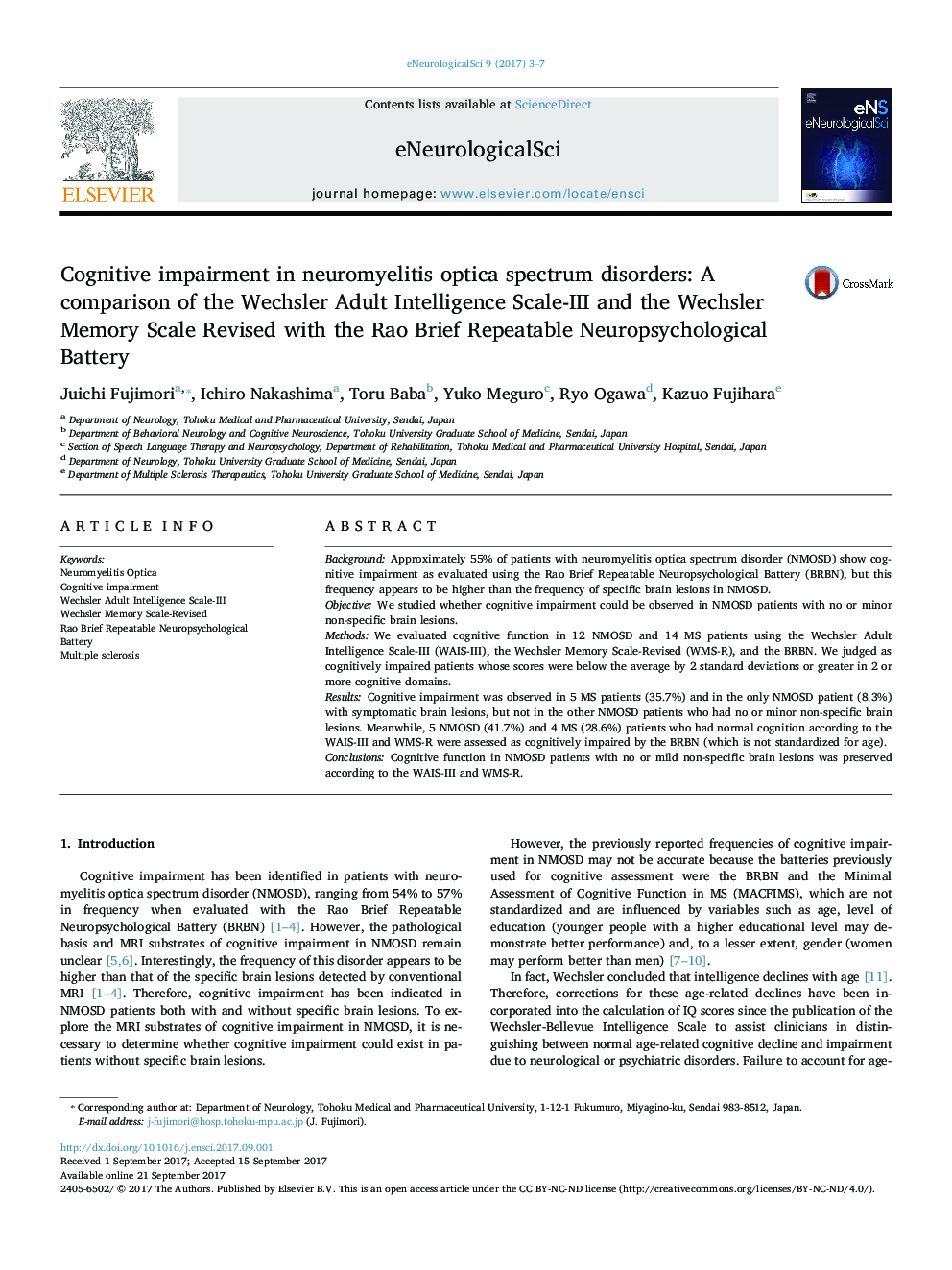| Article ID | Journal | Published Year | Pages | File Type |
|---|---|---|---|---|
| 5627948 | eNeurologicalSci | 2017 | 5 Pages |
â¢NMOSD patients without symptomatic brain lesions were cognitively intact.â¢BRBN may misevaluate cognitive functions in NMOSD patients over 55 years old.â¢WAIS and WMS are suitable for the cognitive assessments in older NMOSD patients.
BackgroundApproximately 55% of patients with neuromyelitis optica spectrum disorder (NMOSD) show cognitive impairment as evaluated using the Rao Brief Repeatable Neuropsychological Battery (BRBN), but this frequency appears to be higher than the frequency of specific brain lesions in NMOSD.ObjectiveWe studied whether cognitive impairment could be observed in NMOSD patients with no or minor non-specific brain lesions.MethodsWe evaluated cognitive function in 12 NMOSD and 14 MS patients using the Wechsler Adult Intelligence Scale-III (WAIS-III), the Wechsler Memory Scale-Revised (WMS-R), and the BRBN. We judged as cognitively impaired patients whose scores were below the average by 2 standard deviations or greater in 2 or more cognitive domains.ResultsCognitive impairment was observed in 5 MS patients (35.7%) and in the only NMOSD patient (8.3%) with symptomatic brain lesions, but not in the other NMOSD patients who had no or minor non-specific brain lesions. Meanwhile, 5 NMOSD (41.7%) and 4 MS (28.6%) patients who had normal cognition according to the WAIS-III and WMS-R were assessed as cognitively impaired by the BRBN (which is not standardized for age).ConclusionsCognitive function in NMOSD patients with no or mild non-specific brain lesions was preserved according to the WAIS-III and WMS-R.
